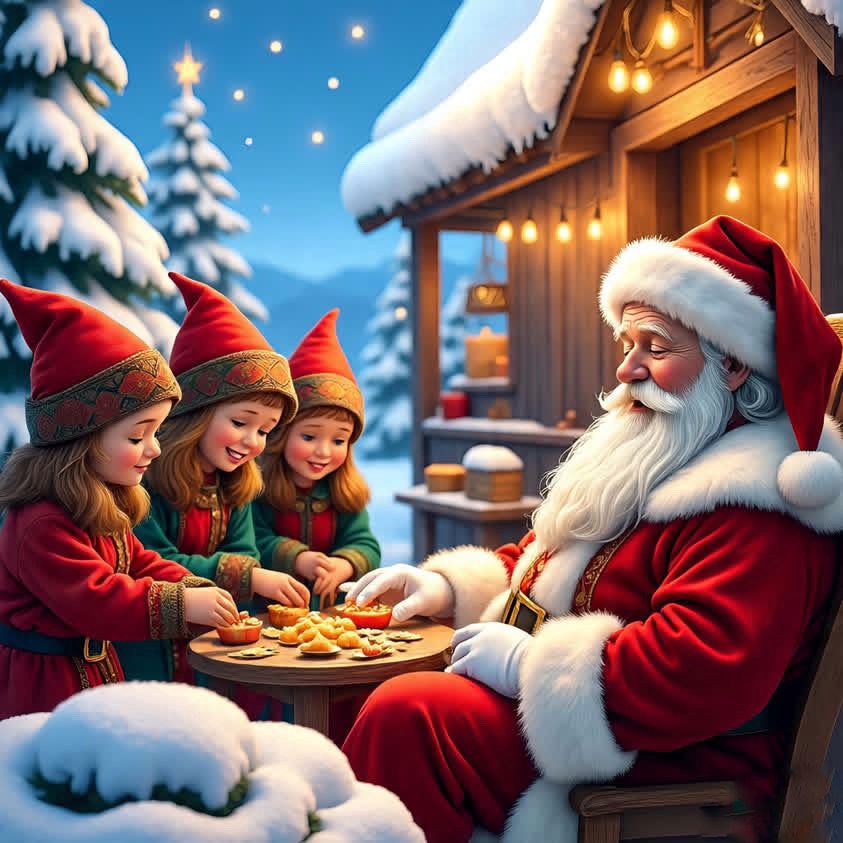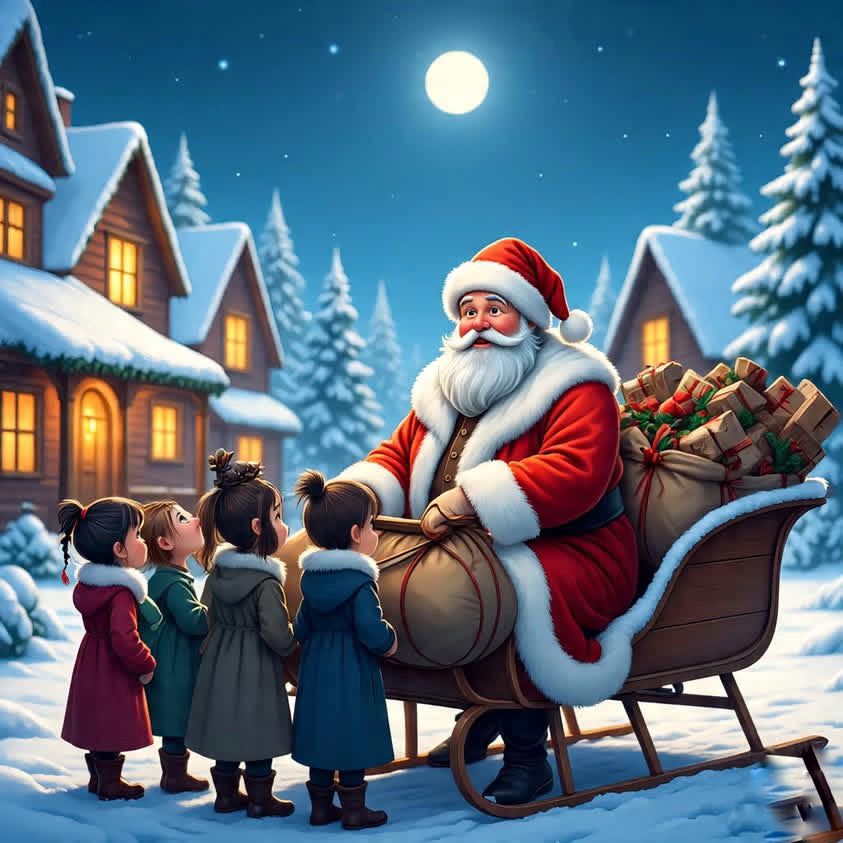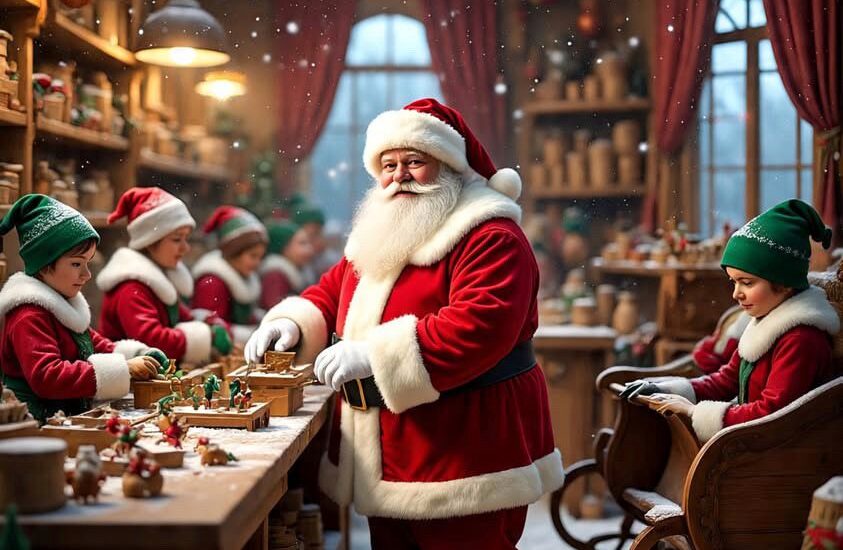Growing up, I never questioned how Santa managed to deliver presents to every house in one night or why he chose to live at the North Pole specifically. Like most children, I simply accepted the magic without wondering about the centuries of storytelling that created this beloved figure. Now, as an adult fascinated by folklore, I find myself drawn to the rich tapestry of legends that wove together to create our modern Santa Claus. Explore Christmas legends, cultural traditions, and holiday history.
The Santa Claus story begins not with elves and reindeer, but with a real person who walked the earth over 1,700 years ago. Saint Nicholas of Myra lived in what we now call Turkey during the 4th century, and his reputation for generosity became legendary throughout the Byzantine Empire. This bishop had a particular soft spot for children and the poor, often giving gifts anonymously to those in need.
One tale that particularly captures my imagination tells of Nicholas secretly dropping gold coins down a chimney to help a poor widower provide dowries for his three daughters. The coins supposedly landed in stockings that were hanging by the fire to dry. When I think about our modern tradition of hanging Christmas stockings, it amazes me how this single act of kindness from centuries past continues to bring joy to families today.

But how did Saint Nicholas transform from a Turkish bishop into the jolly, red suited figure we know today? The answer lies in the fascinating journey his legend took across cultures and continents. Dutch settlers brought their tradition of Sinterklaas to America, where his feast day celebrations on December 6th gradually merged with Christmas festivities.
The Dutch version of Saint Nicholas was quite different from our Santa. Sinterklaas was tall and thin, wore bishop robes, and rode a white horse across rooftops. He carried a book that supposedly contained records of whether children had been good or bad throughout the year. Does this sound familiar? This concept of Santa keeping track of behavior became deeply embedded in Christmas folklore, though the modern “naughty or nice” list has taken on a much gentler tone than the original Dutch tales.
Washington Irving played a crucial role in shaping American Santa Claus mythology when he wrote about Saint Nicholas in his 1809 satire, A History of New York. Irving described him as a jolly Dutch burgher who smoked a pipe and flew over treetops in a wagon. But it was Clement Clarke Moore’s 1823 poem A Visit from St. Nicholas that truly revolutionized Santa Claus folklore for American audiences.
Moore’s poem, which begins with the famous line, it was the night before Christmas, introduced elements that seem inseparable from Santa Claus today. The eight reindeer with their memorable names, the sleigh, the chimney entrance, and Santa’s physical appearance as a right jolly old elf all originated from this single work. What strikes me most about Moore’s contribution is how he managed to create imagery so vivid and appealing that it essentially became the standard template for Santa Claus legends worldwide.
The visual representation of Santa underwent another major transformation thanks to political cartoonist Thomas Nast. During the 1860s and 1870s, Nast created a series of illustrations for Harper’s Weekly that depicted Santa as a rotund, bearded figure dressed in red. His drawings also established the North Pole as Santa’s residence and introduced the concept of his workshop where toys were manufactured.

Nast’s Santa was quite political, actually. During the Civil War, his illustrations showed Santa supporting Union troops, and he used the character to comment on various social issues of the time. It fascinates me how this beloved symbol of childhood wonder was once used as a vehicle for adult political commentary.
The Coca-Cola Company often gets credit for creating our modern image of Santa Claus, but this is somewhat of a myth. While their 1930s advertising campaigns featuring artwork by Haddon Sundblom certainly popularized and standardized Santa’s appearance, the red suit and jolly demeanor were already well established by then. However, Coca-Cola’s marketing did help spread this particular version of Santa Claus around the globe, making it the dominant interpretation of the character.
What captivates me most about Santa Claus folklore is how it continues evolving. Different cultures have added their own touches to the legend. In some countries, Santa has helpers or companions. In others, the gift giving happens on different dates or follows unique traditions. The core spirit of generosity and magic remains constant, but the details shift and adapt to local customs.
Reference
Jerman, T. A. (2023). Santa Claus worldwide: A history of St. Nicholas and other holiday gift-bringers. Johns Hopkins University Press. https://muse.jhu.edu/pub/25/article/896003/pdf
Encyclopædia Britannica. (1998). Santa Claus: History, Christmas, North Pole, legend, & facts. Britannica Academic. Retrieved August 10, 2025, from https://www.britannica.com/topic/Santa-Claus
Museum of Arts and Sciences. (n.d.). The Evolution of Santa Claus. Retrieved from https://www.moas.org/The-Evolution-of-Santa-Claus-1-36.html

